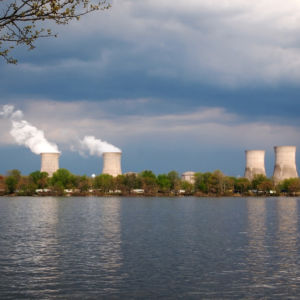Barring a last-minute legislative turnaround, Pennsylvania’s Three Mile Island (TMI) nuclear reactor will close down in the fall of 2019. The economic impacts of the closure on the surrounding area are perhaps the most visible, but the consequences of an early shutdown would likely impact the broader industry as well. An early closure at TMI would also have significant impacts on America’s nuclear knowledge at a time when the industry is poised between a rapid decline and a renaissance.
“We are on the cusp of an entirely new class of reactors,” said Amy Roma, partner at Hogan Lowells, where she practices nuclear and radioactive materials law. “If we don’t find a way to support the fleet that we have, we may pull the rug out from under our feet.”
Speaking at a hearing before the Nuclear Energy Caucus at the Pennsylvania state capitol, Roma stressed that American nuclear know-how was threatened across the country by premature plant closures. Plant closures both discouraged people from entering the field of nuclear engineering and threatened the supply chain for nuclear materials, both issues that, in the long run, could threaten the country’s national security.
More immediately, the U.S. risks losing its position at the cutting-edge of nuclear technology. No new reactors have been built since the 1970s. The only plant currently under construction, the Vogtle power plant in Georgia, is years behind schedule and billions of dollars over-budget. The cost overruns have already threatened to sink the project several times and are likely enough to discourage other utilities from trying to open reactors of their own.
“We’re at a point right now where if those new nuclear technologies don’t get customers, one of two things is going to happen,” said Roma. “They will either die on the vine in the United States or they will move overseas and develop their technology overseas.”
In the U.S. alone, more than 75 new advanced reactor projects are working to develop advanced fuel types and alternative reactor designs that are often smaller and involve new safety systems. Safer and smaller than previously-existing technology, these designs are likely to be the future of nuclear energy. However, they are still years away from deployment. In the meantime, it is important to maintain the skills necessary to operate these reactors once they come online.
“We have a wave of companies that are coming in with a completely different, innovator approach,” said Edward McGinnis, principal deputy assistant secretary of nuclear energy at the Department of Energy, at the same hearing. “It’s not the technology that is needed. It is the application of the product.”
Operating nuclear reactors is, to put it mildly, highly complex. At TMI, many of the reactor supervisors have previously worked in the US Navy on nuclear-powered ships. Even with that experience, transitioning to working at a power plant takes two years of additional on-site training.
Next to the control room and generator for the TMI reactor sits a building containing the plant’s training center, a full-scale replica of the control room that replicates each and every switch and dial. Plant and shift supervisors work 12-hour shifts three days a week in five week rotations. As part of each rotation, they return to the simulator to continue training. Former plant operators develop different scenarios to repeatedly test the responses of the current supervisors.
Although highly detailed, this knowledge is largely site-specific. If the supervisors leave TMI for another reactor plant, they must repeat the two-year training process. How many would choose to do so is hard to predict.
These job challenges may also be discouraging students from entering the field. At the collegiate level, nuclear engineering remains a boutique major. According to the Oak Ridge Institute for Science and Engineering (ORISE), the number of nuclear engineering graduates has hovered between 600 and 650 since 2012. This is down 23 percent from the peak years in the 1970s. Most of these students, at the B.S., M.A., and Ph.D. levels, are active duty military, with comparatively few students at all levels planning careers in civilian utilities.
This is of particular concern in Pennsylvania, where Penn State has a top-10 ranked nuclear engineering program and its own on-campus nuclear reactor. The Penn State Breazeale Reactor first went critical in 1955 and is the nation’s longest continuously operating university research reactor.
The Trump administration has talked about federal support for nuclear and coal generators. Although a draft document was leaked this summer, so far, no official policy changes have been announced. State governments, waiting for a decision by federal regulators, have also been dragging their feet. In the meantime, America’s nuclear industry creeps closer to a brain drain, risking losing the technical expertise critical to operating the generators of the future.

